What is Lora Antenna 5.8 dBi Antenna 915MHz Outdoor Antenna?
The Lora Antenna 5.8 dBi Antenna 915MHz Outdoor Antenna CTRF-ANTENNA-FB-0915-20550-NM is a LoRa glass fiber antenna 5.8dBi high gain network antenna RF N-type male standard connector 868/915MHz antenna manufactured by C&T RF Antennas Inc for EU868 US915 outdoor Lora node, gateway, LoraWan gateway applications.
This Lora Antenna 5.8 dBi Antenna 915MHz Outdoor Antenna can be a bundle consisting of a 5.8 dBi antenna 915MHz Lora fiberglass antenna, cable assembly, RF Lightning Arrestor, and an antenna magnetic base for LoRa®.
The Lora Antenna 5.8 dBi Antenna 915MHz Outdoor Antenna Fiberglass Antenna is manufactured by C&T RF Antennas Inc, the Lora internal antennas & Lora external antennas manufacturer in China.
C&T RF Antennas Inc provides the 15dBi Lora antenna, 11dBi Lora Antenna, 12dBi Lora antenna, 20dBi Lora antenna, 10dBi Lora antenna, 9dBi Lora antenna, 8dBi Lora antenna, 6dBi Lora antenna, 5.8dBi Lora antenna, 5dBi Lora antenna, 4dBi Lora antenna, 3dBi Glass Fiber Lora Antenna, 3dBi Lora antenna, 2.5dBi Lora antenna, 2dBi Lora antenna, etc.
C&T RF Antennas Inc provides different antenna types such as Through-hole Mount Antennas, Magnetic Mount Antennas, Rubber Duck Antennas, Fiberglass Antennas, PCB Antennas, FPC Antennas, Spring Coil Antennas, Sector Antennas, Yagi antennas, etc.
C&T RF Antennas Inc provides the internal-external antenna with many radio frequency bands such as Cellular, 6G, 5G, 4G, 3G, NB-IoT, GNSS, GPS, Dual-band Wifi, 5.8 GHz, 2.4 GHz, 169MHz, 230MHz, 315MHz, 433MHz, 868MHz, 915MHz LoRa, UWB, RFID, ADS-B, etc.
C&T RF Antennas Inc provides single-band, dual-band, and multi-band antennas such as 3in1 combination antennas 4G/GPS/Wifi antennas, 2in1 4G/GPS antennas, GSM/GPS antennas, 4G/Wifi antennas, GPS/Wifi antennas, etc. for Wi-Fi And Bluetooth, GPS And GNSS, LoRa And ISM, IoT, And M2M applications.
The Omni Fiberglass Antenna Lora Antenna 5.8 dBi Antenna 915MHz Outdoor Antenna is available at C&T RF Antennas Inc.
C&T RF Antennas Inc offers Lora Antenna 5.8 dBi Antenna 915MHz Outdoor Antenna inventory, Lora Antenna 5.8 dBi Antenna 915MHz Outdoor Antenna pricing, & Lora Antenna 5.8 dBi Antenna 915MHz Outdoor Antenna datasheets, or the other dBi Lora antennas.
Lora Antenna 5.8 dBi Antenna 915MHz Outdoor Antenna Fiberglass Antenna Specifications
Lora Antenna 5.8 dBi Antenna 915MHz Outdoor Antenna Electrical Specifications | |
| RF Antenna Type | Omni Fiberglass Antenna |
| Model | CTRF-ANTENNA-FB-0915-20550-NM |
| Frequency Range | 900-930MHz |
| Gain | 5.8dBi |
| VSWR | ≤1.8 |
| Impedance | 50 Ω |
| Polarization | Vertical |
| Directional | Omni-directional |
| Connector | N-type Male |
| Max Power | 50W |
| Lightning Protection | DC-Ground |
Lora Antenna 5.8 dBi Antenna 915MHz Outdoor Antenna Mechanical Specifications | |
| Dimension | 20*550mm |
| Weight | Approx. 250g |
| Radome Material | Fiberglass |
| Operation Temperature | -20˚C ~ +85˚C |
| Storage Temperature | -40˚C ~ +85˚C |
| Color | Grey |
| Antenna Design | Dipole Array |
| Mounting | Screw |
| Safety Emission and other | RoHS Compliant |
| Applications | Public Safety/LMR/P25/TETRA, ISM/SCADA/Utilities, RFID, IoT/NB-IoT/LoRa |
Lora user application layer
Lora personalization, extraction of data from the database
Lora linear modulation
Why LoRa has such a long communication range Compared to FSK modulation, LoRa modulation uses linear spread spectrum technology. Why is linear spread spectrum technology so awesome?
We know that wifi, Zigbee including 3G/4G uses direct sequence decoding technology and Bluetooth uses frequency hopping technology.
Linear spread spectrum technology is difficult to modulate and has high technical difficulties. Generally used for military communications, the benefits are strong noise immunity, long propagation distance, and difficulty to crack.
Low rate
LoRa communication rate is low, how low is it? the lower the rate of LoRa communication the longer the distance, really far.
At Sf = 7, bw = 125kHz it takes 59ms to transmit 10b bytes. at SF = 12, bw = 125kHz it takes 1361ms to transmit 10b bytes, and 2450ms for 64 packets of bytes (these are approximate figures for reference only, actual conditions may vary). But the distance will be long.
Upstream and downstream transmission of LoRaWAN end nodes
This is the timing of Class A uplink and downlink, at present, RX1 is generally started 1 second after uplink, and RX2 is started 2 seconds after uplink.
Class C and A are basically the same, except that during the period when Class A is asleep, it has the receive window RX2 open.
Class B has a more complex time slot, with an asynchronous time slot beacon and a fixed-period receive window ping time slot. In this example, the beacon period is 128 seconds and the ping period is 32 seconds.
Networking the end nodes
Before any data can be sent or received, the terminals must be networked.
There are two types of over-the-Air Activation (OTAA) and Activation by Personalization (ABP).
Commercial LoRaWAN networks generally go through the OTAA activation process so that security can be guaranteed. This method requires the preparation of three parameters, DevEUI, AppEUI, and AppKey.
DevEUI is a globally unique ID similar to IEEE EUI64, which identifies a unique end device. It is equivalent to the MAC address of the device.
AppEUI is a globally unique ID similar to IEEE
A EUI64-like globally unique ID that identifies a unique application provider. For example, each bin monitoring application, a smoke alarm application, etc., has its own unique ID.
The AppKey is assigned to the terminal by the application owner.
After initiating the join process, the terminal sends the join command and the NS (Network Server) confirms that it is correct and then replies to the terminal with a join reply, assigning the network address
DevAddr (32-bit ID), and both parties use the relevant information in the join reply and AppKey to generate session keys NwkSKey and AppSKey, which are used to encrypt and verify data.
If the second method of network addition is used, i.e. ABP activation, it is simpler and more brutal to directly configure DevAddr, NwkSKey, AppSKey
These three parameters for the final LoRaWAN communication are no longer needed for the join process. In this case, this device is able to send application data directly.
Lora Antenna 5.8 dBi Antenna 915MHz Outdoor Antenna Fiberglass antenna features
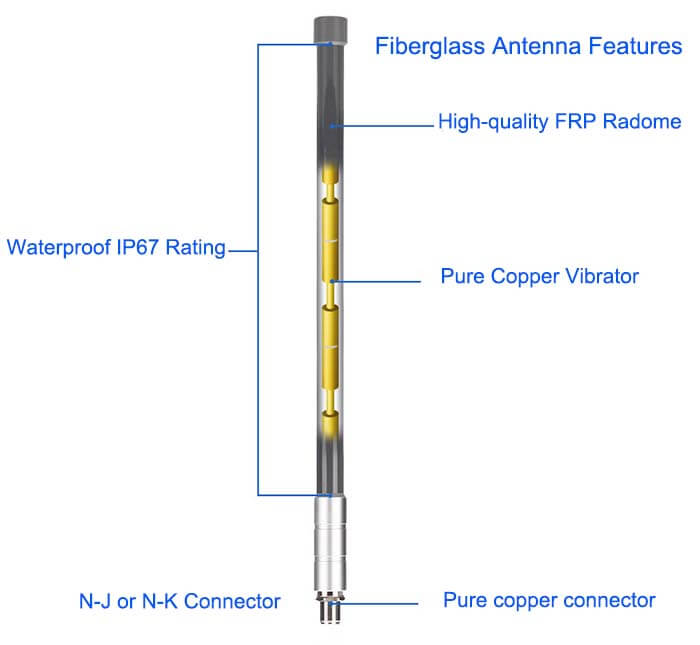
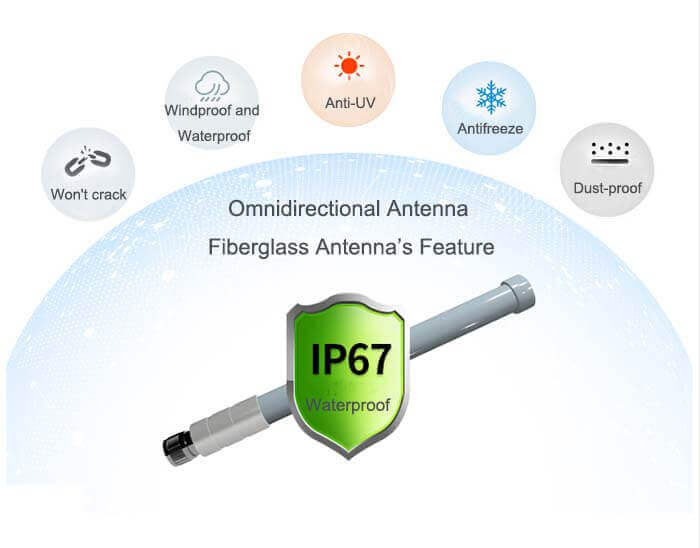
How do you mount a Lora Antenna 5.8 dBi Antenna 915MHz Outdoor Antenna?
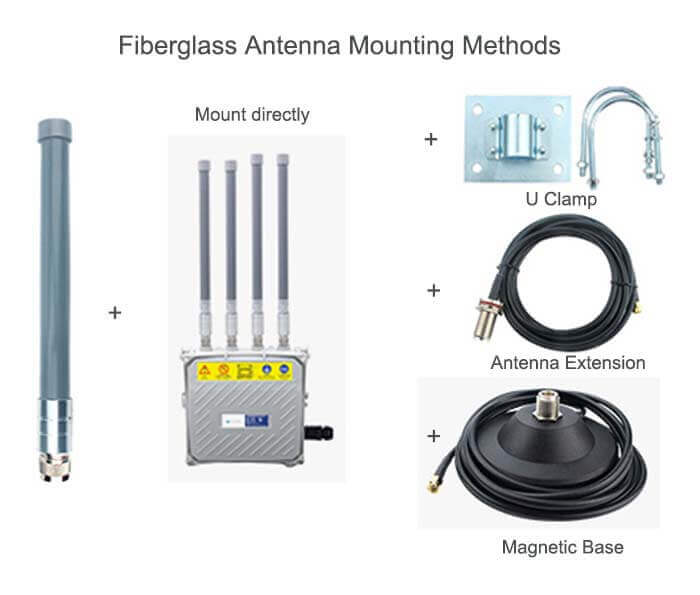
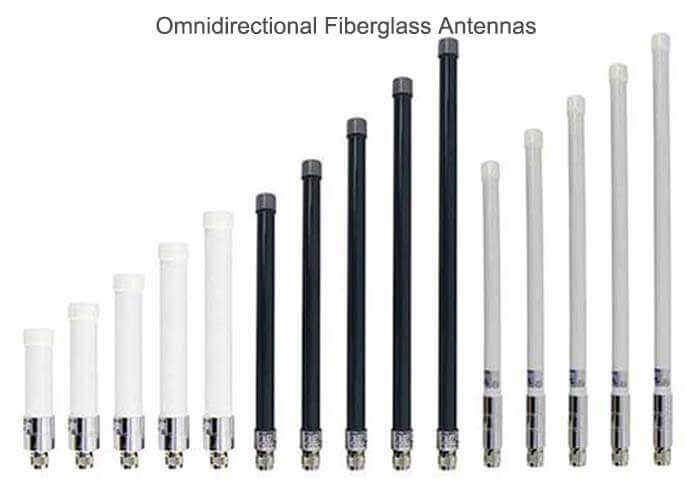
Lora Antenna 5.8 dBi Antenna 915MHz Outdoor Antenna Applications


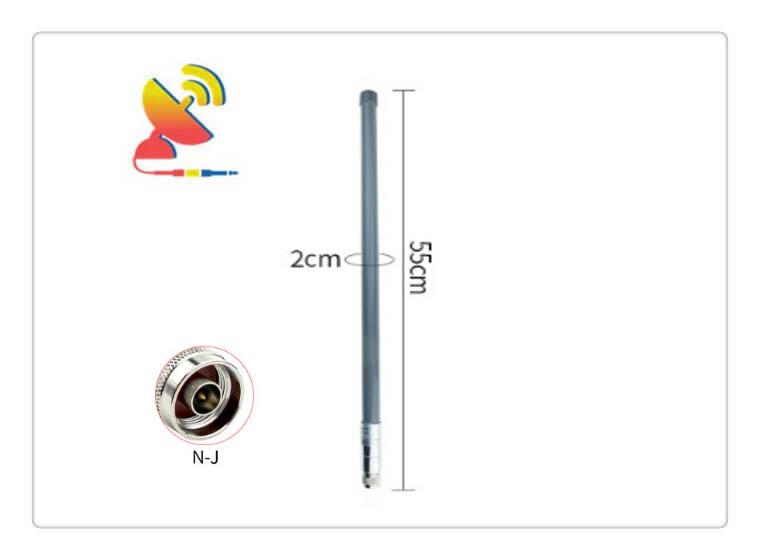
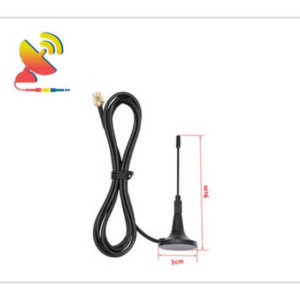
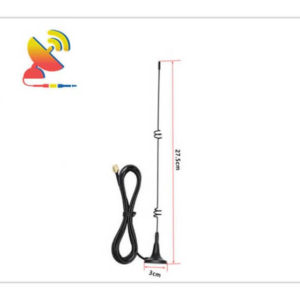
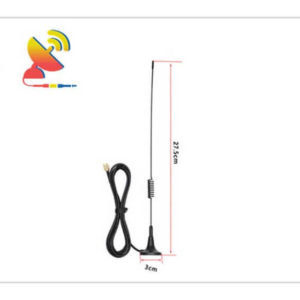
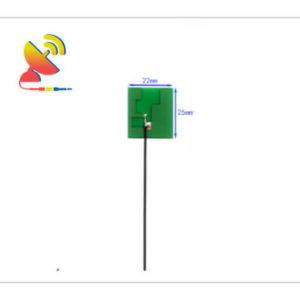
Reviews
There are no reviews yet.